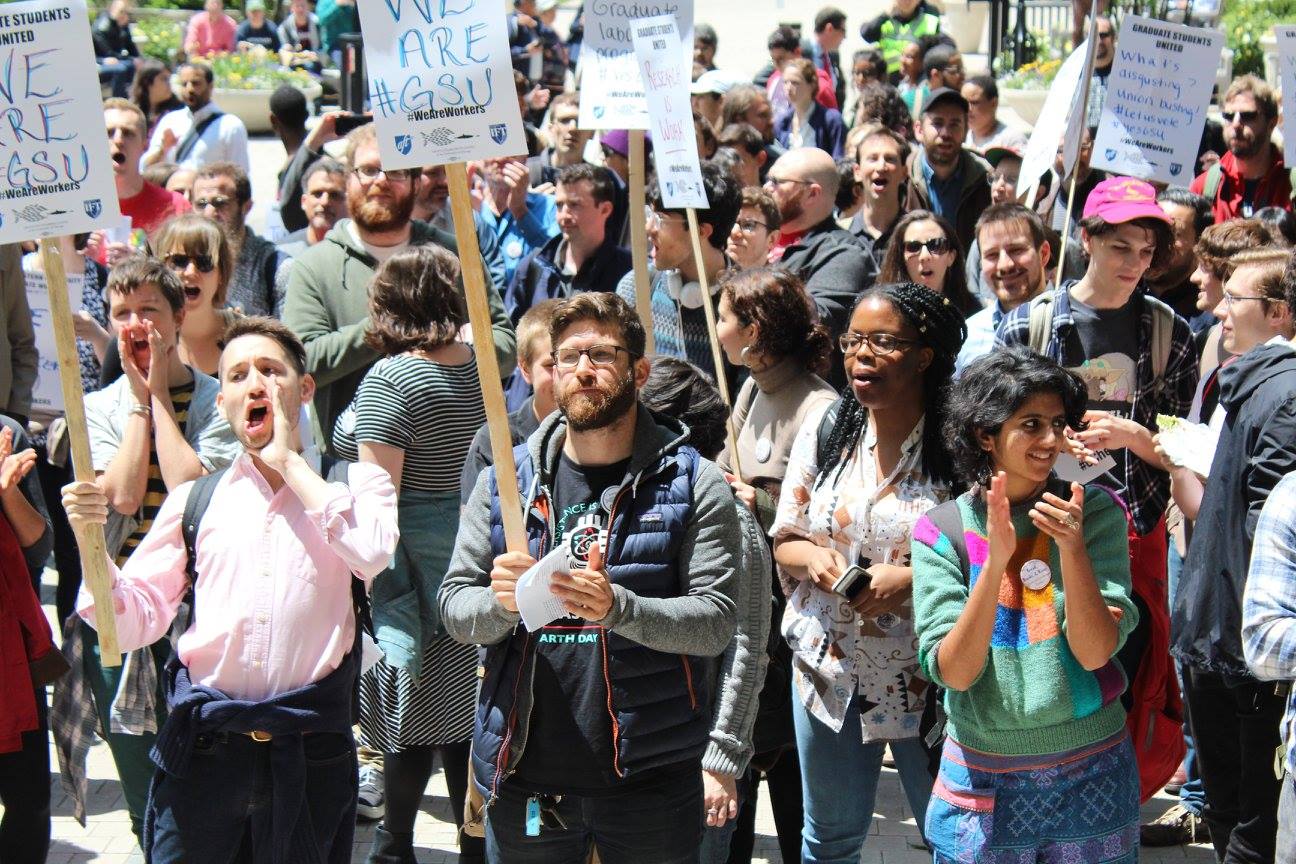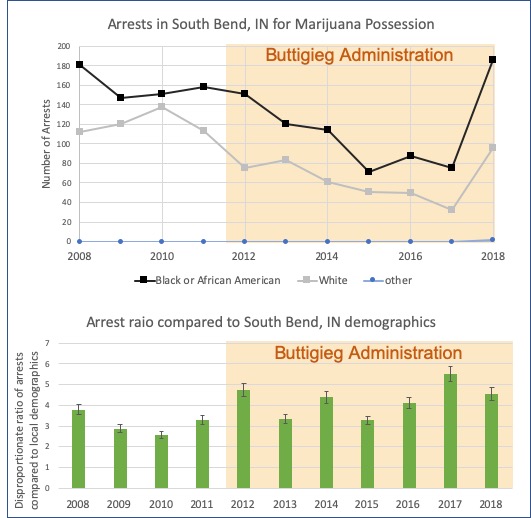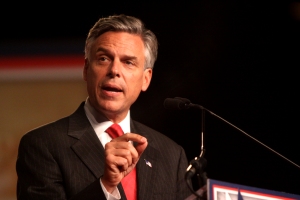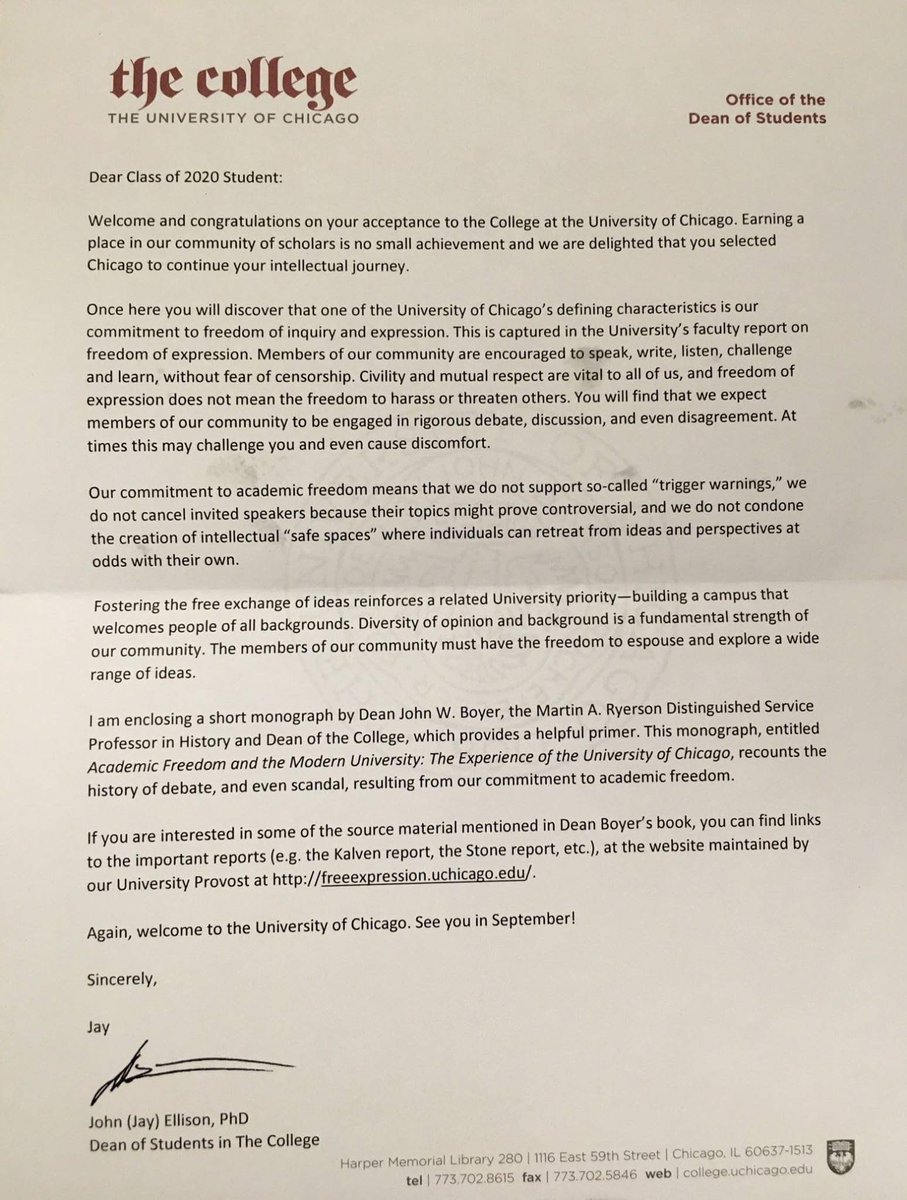The following article was published by the Union of Concerned Scientists on October 1, 2019 and is re-published with permission.

In May 2017, Ben marches with fellow Graduate Students at the University of Chicago for union recognition. Photo: Claudio Gonzáles
Our federal labor laws have a loophole: If you can get away with characterizing your employees as “students”, you don’t have to respect their right to unionize. Research institutions have been doing this to prevent graduate student workers, who are paid to teach and perform research for their institution, from forming an effective labor union. It’s a neat trick; could a “Walmart University” be on the horizon?
The National Labor Relations Board (NLRB) has bounced back-and-forth for decades on whether or not graduate student workers are “employees” with the right to unionize. Democratic administrations vote “yay”, and Republicans, “nay”.
In 2016, the Obama-era NLRB ruled that graduate student workers could unionize at Columbia University, a private institution that is under NLRB jurisdiction. I was a PhD student at the University of Chicago at the time, and soon after this decision, we voted overwhelmingly to form a labor union. The university fought us at every step, and I was repeatedly floored by the absurd arguments, insults, and rampant dishonesty from the administration. They devalued our work, mischaracterized our relationship with the university, and lied about our compensation not being dependent on productivity. And yet, their message was “trust us, you don’t need a union”.
When President Trump was elected, union movements like ours performed an impressive act of solidarity: They all withdrew their unionization petition in an effort to delay the Trump NLRB’s ability to repeal the Columbia-decision precedent. As of September 2019, the delay appears to be over. In a release, the Trump NLRB is back to “nay”, announcing a move to overturn the 2016 “Columbia decision” and removing protections for graduate student workers.
To be clear, this is not a debate about whether or not graduate student workers should form a union; that’s up to the workers at each institution. This is a debate about whether or not graduate student workers are employees in the first place with a right to unionize.
Getting a PhD has very little in common with going to college. There is little to no significant coursework, homework, assignments, exams, or grades. It’s a job, an entry-level apprenticeship, but a job nonetheless. Educated professionals, with a master’s degree, perform services in exchange for salary, meager benefits, and the possibility of a future PhD. Sucking up prime years of life, science PhD’s now average 6-8 years.
Research universities are dependent on graduate student work. Much of the teaching is performed by graduate students, at a low cost, and often without much input from faculty. The vast majority of research is performed by graduate students and postdocs (Grad students and postdocs do essentially the same work). Research faculty mostly function as managers and writers, but faculty clout, rank, grant funding, and tenure is highly dependent on the research that their students design, develop, and produce. Universities depend on taking a significant chunk of this grant money as well.
When you are getting a PhD, your faculty advisor is your boss, your patron, your Ayatollah. They direct and judge your work, evaluate you, subjectively decide if and when you graduate, and can fire you at any time. Sometimes the worst bosses are distant and passive aggressive, never satisfied, sometimes pitting students against each other, scaring students into pushing themselves to the brink of exhaustion and nervous breakdown. Most companies are incentivized to take care of their employees by a fluid job market, but changing PhD advisors is difficult and usually means starting over with a new project in a new subject.
It is not surprising that there is a mental health crisis among graduate students, with depression and anxiety six times higher than the general population. Depression rates are 30-40% and highest among women and racial minorities. 7.3% have had suicidal thoughts and 2.3% have made plans for suicide. Half of graduate students drop out due to the stress, risk, and imbalance of power. It’s rarely a failure of intellect or work ethic.
Sexual harassment is also a symptom of such power imbalances and toxic environments. I was at the party where this happened. In a different incident, two of my lab mates were groped by a senior faculty member that wasn’t their advisor, but they feared reprisal if they reported it.
Some bosses are fine, and some universities have relatively good work environments. (Like a job!) However, even the most easygoing bosses can be anxiety-inducing because you never know when things could change, like climbing a cliff face without a safety rope. Labor rights and a union can be that safety rope.
Labor unions have long been the solution for situations just like this: a company town built around a mine or factory, in which the employees cannot simply pick up and leave. Unions negotiate higher wages, benefits, and workplace protections, benefits that exceed union dues.
Graduate student labor unions could also negotiate:
- Clear expectations for earning a degree to reduce exploitative and capricious decisions
- Requirements for a powerful thesis committee as a check on a single advisor
- Safety net policies in case of your advisor moving, retiring, dying, losing funding, or unjustly firing a student.
- Resources and reporting guidelines for harassment
- Minimum vacation time and workload limits
- Mental health resources
- Childcare benefits
There are plenty of solutions: Congress or state legislatures could close this labor loophole. A new administration could appoint a new NLRB. Universities or even just their faculty could voluntarily recognize their employees’ right to collective bargaining, like was done at Harvard. Graduate school rankings and prospective students could make strong unions a key factor in deciding where to apply or accept a position.
Graduate students’ wellbeing is linked to the country’s wellbeing, and those 50% of PhD students that drop out are a loss for everyone. Never has it been more important to produce highly educated, creative PhD scientists, engineers, and thinkers. We need these people to start new businesses, cure disease, solve problems that have stumped past generations, and teach the generations that will follow.
Dr. Ben Zalisko earned his PhD in Chemistry from the University of Chicago in 2017 where he was a union advocate. Today, he is an AAAS Science & Technology Policy Fellow, pursuing a long-term career in the federal government. He also runs the science-policy podcast “Beltway Science”, where this issue was recently discussed in detail. His views here do not in any way reflect those of AAAS or the US Government. To hear more from Ben follow him on Twitter @benzalisko or his podcast @beltwayscience.
























